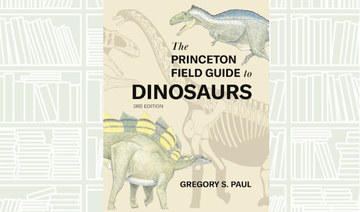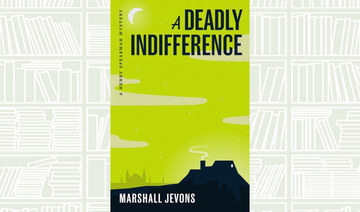Sharp, concise and fun to read, this collection of essays offers a fresh and dynamic look at the history of economics. Niall Kishtainy teaches at the London School of Economics (LSE) and has been an economic policy adviser to the UK government and the UN Economics Commission for Africa. He has the ability to explain a difficult concept clearly.
“The word ‘economics’ might sound a bit dry and make you think of a load of boring statistics. But all it’s really about is how to help people to survive and to be healthy and educated. It’s about how people get what they need to live full, happy lives and why some people don’t,” writes Kishtainy with a deep sense of pragmatism.
If the first economic thinkers were the Greeks, the world’s first school of economists was led by Frenchman Francois Quesnay (1694-1774), who was the doctor of Madame de Pompadour, King Louis XV’s favorite mistress. Quesnay’s followers were known as physiocrats.
His friend, the Marquis de Mirabeau, had just published a book that not only upset many people, but also got him thrown into prison. Mirabeau’s ideas were quite revolutionary for the time. He demanded that French peasants no longer be required to pay taxes and the aristocracy be taxed instead. He had forgotten that the ruler needed the aristocrats on his side.
Quesnay believed that French society and its economy, which he compared to a goose, “had been plucked so hard that it was nearly bald.” He urged the government to abolish the restrictions that oppressed French peasants and to put an end to the privileges enjoyed by the merchants. He did not want the government to interfere in the country’s economy.
This concept leads us to the Scottish philosopher Adam Smith (1723-1720), a key economic thinker. He was often so buried in his thoughts that he would forget where he was. One morning, he woke up and began walking in his dressing gown around the garden of his home in Scotland. He then walked along the road until he reached the next town 12 miles away.
Smith wanted to know if self-interest is compatible with a good society. He believed that when people pursued their own interests, this would benefit more people. You are able to buy bread because bakers pursue their own interests by baking then selling it. In turn, bakers can make money because you pursue your own interest by buying the bread.
In the end, self-interest promotes social harmony rather than chaos, and Smith came up with one of the most famous thoughts in economics: “It’s as if society is guided by an invisible hand.” He wrote “The Wealth of Nations,” which was published in 1776 and is one of the most important books in the history of economics. “American President Ronald Reagan championed these principles, taking Smith as his inspiration,” writes Kishtainy.
Although the essays are presented in chronological order, each one focuses on a key thinker, idea or event that you can read in any order you fancy. I skipped the big names — Thomas Malthus, John Maynard Keynes, Milton Friedman and Karl Marx — and set my eyes on “The Noisy Trumpeter,” where Kishtainy presents British economist Arthur Cecil Pigou (1877-1959), a typical eccentric professor dressed in an old frumpy suit.
His mentor, the great Victorian economist Alfred Marshall, called his student a genius. Pigou continued the work initiated by his teacher. He stressed the fact that markets do not work perfectly and he created a new field known as “welfare economics.”
Pigou believed that markets fail when there is a difference between social effects, which impact everyone, and private effects, which affect only the person producing the externality. Pigou’s work developed policies that could be used to improve specific markets, such as the oil market.
At the turn of the 20th century, Standard Oil controlled most of America’s oil. This company had no competitors, so could increase the price to make more profit. In a competitive market, there is a bigger choice of goods sold at cheaper prices. The US government eventually broke up Standard Oil into separate companies.
In an essay entitled “Flashing Your Cash,” Kishtainy introduces us to Thorstein Veblen, “one of the most unconventional economic thinkers America ever produced.” His parents, originally Norwegian, had a small farm in Wisconsin and he always considered himself far removed from America’s rich and powerful. From a very young age, he loved unsettling people and breaking conventions.
After earning a PhD from Yale University, he returned to his parents’ farm and wrote his books in the basement of a friend’s house, which he entered through a window. His most famous book, “The Theory of the Leisure Class,” criticizes the conventional way of thinking about economic behavior. Veblen believed that people’s decision to buy is not rational, but based on their instincts and habits shaped by the environment they grew up in.
According to him, writes Kishtainy, “we buy things not so much to satisfy our own desires as a completely rational person would, but in order to be approved of by others. Think about the last T-shirt that you bought: Even if you bought it because you liked it, didn’t you also think about whether your friends would like it too?”
Veblen was fascinated by the American consumer society, especially the leisure class, which indulged in huge houses, cars and jewelry to show off its fortunes. He coined this form of buying “conspicuous consumption” and believed it was a waste. “It diverts economic energy from the production of what people really need into what they can show off with.”
Veblen received recognition late in his life. He was 70-years-old when he was offered the presidency of the American Economic Association, but true to his anti-conventional beliefs, he refused the post and lived the rest of his life in a cabin outside Palo Alto.
Another interesting essay concerns American economist George Akerlof, who was awarded the Nobel Prize for Economics in 2001. He became famous for an article he wrote in 1970. Entitled “The Market for Lemons,” the article is all about buying a second-hand car. The seller knows if the car is a lemon, but will always tell the buyer it is in good condition. The problem is that buyers never know which cars are in good shape and which are not.
Akerlof believes that in the economy, there are always some people who know more than others, but for markets to do well, people need to know everything. He encountered great difficulty in publishing his article. One editor even told him his idea was insignificant.
Eventually, his article got published and it created a new field known as “information economics.” Akerlof met Joseph Stiglitz at the Massachusetts Institute of Technology (MIT) in the 1960s. Stiglitz became an advocate for information economics and shared a Nobel Prize with Akerlof in 2001.
Stiglitz realized that when you are involved in the development of poor countries, information economics has an essential role to play. He has been very critical of Washington officials. “They completely ignored the risks of free-market policies that let money flow in and out of the countries without any restrictions when the lenders didn’t have good information about who they were lending to,” writes Kishtainy.
Information problems cause breakdowns in the market, meaning that the invisible hand is not really working. When Stiglitz received the Nobel Prize, he remarked humorously that Smith’s hand is invisible because it is not there and if it is there, it must be paralyzed.
I have only mentioned a few economists, but Kishtainy has included all the most important ones, along with important events such as the Great Depression, the rise of capitalism and speculation. These crisp and entertaining essays provide a wonderful overview of the history of economics. “A Little History of Economics” gives us the gist of economic thinking in clear language, far from the hermetic verbiage that many economists indulge in.
• [email protected]
A dynamic look at the history of economics
A dynamic look at the history of economics

What We Are Reading Today: ‘Quantitative Biosciences Companion in Python’
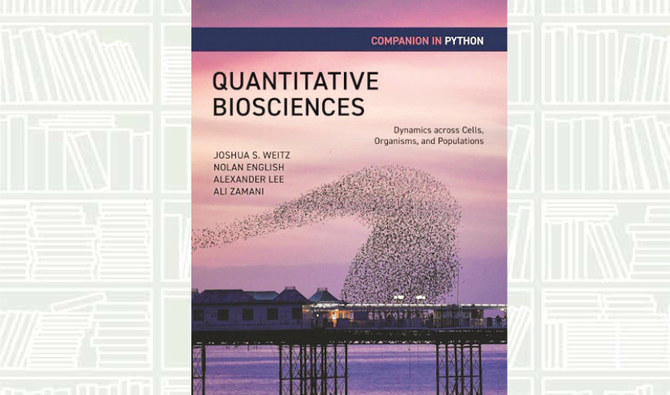
Authors: JOSHUA S. WEITZ, NOLAN ENGLISH, ALEXANDER LEE, AND ALI ZAMANI
This lab guide accompanies the textbook “Quantitative Biosciences,” providing students with the skills they need to translate biological principles and mathematical concepts into computational models of living systems.
This hands-on guide uses a case study approach organized around central questions in the life sciences, introducing landmark advances in the field while teaching students—whether from the life sciences, physics, computational sciences, engineering, or mathematics—how to reason quantitatively in the face of uncertainty.
What We Are Reading Today: Heart of Darkness: Unraveling the Mysteries of the Invisible Universe
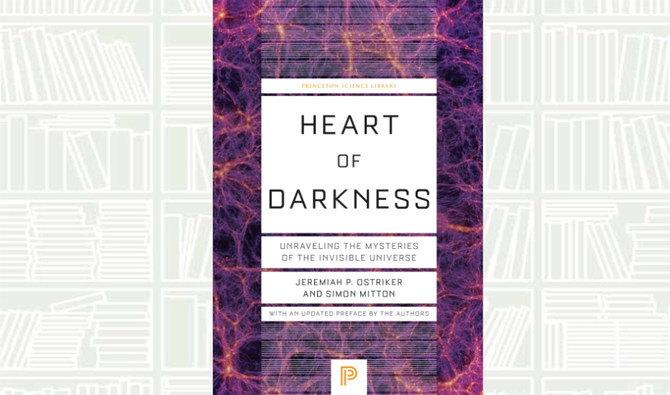
- The story of how evidence for the so-called “Lambda-Cold Dark Matter” model of cosmology has been gathered by generations of scientists throughout the world is told here by one of the pioneers of the field, Jeremiah Ostriker, and his coauthor Simon Mitton
Authors: Jeramiah P. Ostriker and Simmon Mitton
Heart of Darkness describes the incredible saga of humankind’s quest to unravel the deepest secrets of the universe. Over the past 40 years, scientists have learned that two little-understood components—dark matter and dark energy—comprise most of the known cosmos, explain the growth of all cosmic structure, and hold the key to the universe’s fate.
The story of how evidence for the so-called “Lambda-Cold Dark Matter” model of cosmology has been gathered by generations of scientists throughout the world is told here by one of the pioneers of the field, Jeremiah Ostriker, and his coauthor Simon Mitton.
From humankind’s early attempts to comprehend Earth’s place in the solar system, to astronomers’ exploration of the Milky Way galaxy and the realm of the nebulae beyond, to the detection of the primordial fluctuations of energy from which all subsequent structure developed, this book explains the physics and the history of how the current model of our universe arose and has passed every test hurled at it by the skeptics.
This monumental puzzle is far from complete, however, as scientists confront the mysteries of the ultimate causes of cosmic structure formation and the real nature and origin of dark matter and dark energy.
What We Are Reading Today: ‘A Natural History of Shells’ by Geerat Vermeij

Geerat Vermeij wrote this “celebration of shells” to share his enthusiasm for these supremely elegant creations and what they can teach us about nature.
Most popular books on shells emphasize the identification of species, but Vermeij uses shells as a way to explore major ideas in biology.
How are shells built? How do they work? And how did they evolve?
With lucidity and charm, the MacArthur-winning evolutionary biologist reveals how shells give us insights into the lives of animals today and in the distant geological past.
What We Are Reading Today: The Princeton Field Guide to Dinosaurs

Author: Gregory S. Paul
The bestselling “Princeton Field Guide to Dinosaurs” remains the must-have book for anyone who loves dinosaurs, from amateur enthusiasts to professional paleontologists. Now extensively revised and expanded, this dazzlingly illustrated large-format edition features nearly 100 new dinosaur species and hundreds of new and updated illustrations, bringing readers up to the minute on the latest discoveries and research that are radically transforming what we know about dinosaurs and their world.
What We Are Reading Today: The Virtue Proposition by Sig Berg
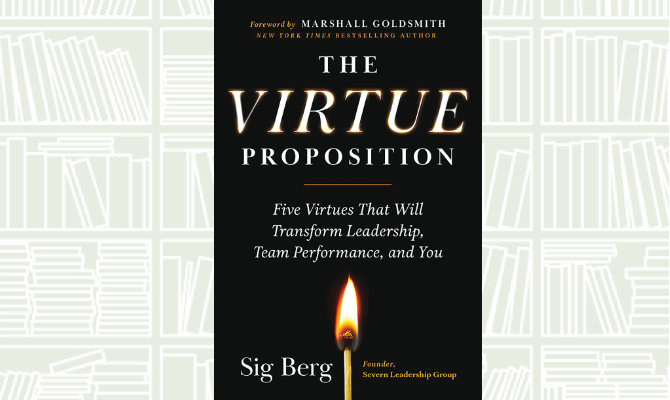
Sig Berg, founder of the Severn Leadership Group, explains what’s missing from traditional leadership, with its emphasis on the rules and rituals of boardrooms and C-suites, and from iconoclastic leadership, which urges you to move fast and break things.
Neither of these embrace virtues, and neither has, nor ever will, deliver consistent superior results.
There is a courageous third way: virtuous leadership.
This book speaks to men and women who witness the absence of virtues and know they can do better, says a review published on goodreads.com.




